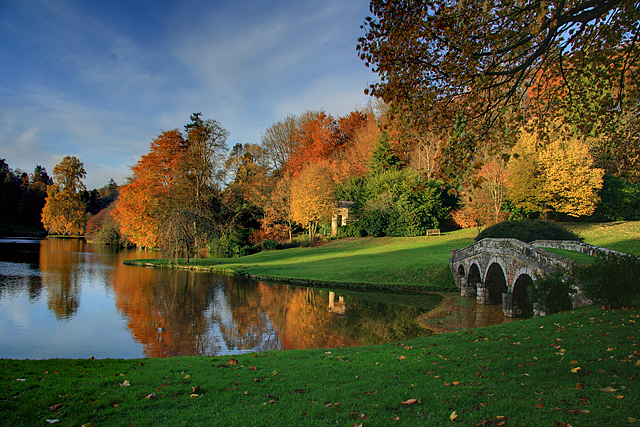|
Boston Architectural College
The Boston Architectural College (BAC) is a private college in Boston. It is New England's largest private college of spatial design. The college's main building is at 320 Newbury Street in Boston's Back Bay neighborhood. History Boston Architectural Club (1889–1944) Boston Architectural Club was established on December 11, 1889. The certificate of incorporation explains that the club was formed "for the purpose of associating those interested in the profession of architecture with a view to mutual encouragement and help in studies, and acquiring and maintaining suitable premises, property, etc., necessary to a social club... and...for public lectures, exhibitions, classes, and entertainment." Members of the Club provided evening instruction for drafters employed in their offices. From this interchange, an informal atelier developed in the tradition of France's École des Beaux-Arts. The Club held annual public exhibitions and published illustrated catalogs. Bertrand E. T ... [...More Info...] [...Related Items...] OR: [Wikipedia] [Google] [Baidu] |
Private College
Private universities and private colleges are higher education institutions not operated, owned, or institutionally funded by governments. However, they often receive tax breaks, public student loans, and government grants. Depending on the country, private universities may be subject to government regulations. Private universities may be contrasted with public universities and national universities which are either operated, owned or institutionally funded by governments. Additionally, many private universities operate as nonprofit organizations. Across the world, different countries have different regulations regarding accreditation for private universities and as such, private universities are more common in some countries than in others. Some countries do not have any private universities at all. Africa Egypt Egypt currently has 21 public universities with about two million students and 23 private universities with 60,000 students. Egypt has many private universities in ... [...More Info...] [...Related Items...] OR: [Wikipedia] [Google] [Baidu] |
Ralph Adams Cram
Ralph Adams Cram (December 16, 1863 – September 22, 1942) was a prolific and influential American architect of collegiate and ecclesiastical buildings, often in the Gothic Revival style. Cram & Ferguson and Cram, Goodhue & Ferguson are partnerships in which he worked. Cram was a fellow of the American Institute of Architects. Early life Cram was born on December 16, 1863, at Hampton Falls, New Hampshire, to William Augustine Cram and Sarah Elizabeth (Blake) Cram. He was educated at Westford Academy and Phillips Exeter Academy. He was a cousin of Ralph Warren Cram. At age 18, Cram moved to Boston in 1881 and worked for five years in the architectural office of Rotch & Tilden, after which he left for Rome to study classical architecture. From 1885 to 1887, he was art critic for the ''Boston Transcript''. During an 1887 Christmas Eve Mass in Rome, he had a dramatic conversion experience. For the rest of his life, he practiced as a fervent Anglo-Catholic who identified as hi ... [...More Info...] [...Related Items...] OR: [Wikipedia] [Google] [Baidu] |
Radcliffe College
Radcliffe College was a Women's colleges in the United States, women's Liberal arts colleges in the United States, liberal arts college in Cambridge, Massachusetts, that was founded in 1879. In 1999, it was fully incorporated into Harvard College. The college was named for the early Harvard benefactor Anne (Radcliffe) Mowlson, Anne Mowlson (née Radcliffe) and was one of the Seven Sisters (colleges), Seven Sisters colleges. For the first 70 years of its existence, Radcliffe conferred undergraduate and graduate degrees. Beginning in 1963, it awarded joint Harvard-Radcliffe diplomas to undergraduates. In 1977, Radcliffe signed a formal "non-merger merger" agreement with Harvard, and completed a full integration with Harvard in 1999. Within Harvard University, Radcliffe's former administrative campus, Radcliffe Yard, is home to the Radcliffe Institute for Advanced Study. Former Radcliffe housing at the Radcliffe Quadrangle (Harvard), Radcliffe Quadrangle, including Pforzheimer H ... [...More Info...] [...Related Items...] OR: [Wikipedia] [Google] [Baidu] |
Landscape Design
Landscape design is an independent profession and a design and art tradition, practiced by landscape designers, combining nature and culture. In contemporary practice, landscape design bridges the space between landscape architecture and garden design. Design scope Landscape design focuses on both the integrated master landscape planning of a property and the specific garden design of landscape elements and plants within it. The practical, Design, aesthetic, Horticulture, horticultural, and environmental sustainability are also components of landscape design, which is often divided into hardscape design and softscape design. Landscape designers often collaborate with related disciplines such as architecture, civil engineering, surveying, Landscaping, landscape contracting, and artisan specialties. Design projects may involve two different professional roles: landscape design and landscape architecture. * Landscape design typically involves artistic composition and artisanship, ... [...More Info...] [...Related Items...] OR: [Wikipedia] [Google] [Baidu] |
Royal Institute Of British Architects
The Royal Institute of British Architects (RIBA) is a professional body for architects primarily in the United Kingdom, but also internationally, founded for the advancement of architecture under its royal charter granted in 1837, three supplemental charters and a new charter granted in 1971. Founded as the Institute of British Architects in London in 1834, the RIBA retains a central London headquarters at 66 Portland Place as well as a network of regional offices. Its members played a leading part in promotion of architectural education in the United Kingdom; the RIBA Library, also established in 1834, is one of the three largest architectural libraries in the world and the largest in Europe. The RIBA also played a prominent role in the development of UK architects' registration bodies. The institute administers some of the oldest architectural awards in the world, including RIBA President's Medals Students Award, the Royal Gold Medal, and the Stirling Prize. It also man ... [...More Info...] [...Related Items...] OR: [Wikipedia] [Google] [Baidu] |
Leadership In Energy And Environmental Design
Leadership in Energy and Environmental Design (LEED) is a Green building certification systems, green building certification program used worldwide. Developed by the non-profit U.S. Green Building Council (USGBC), it includes a set of rating systems for the design, construction, operation, and maintenance of green buildings, homes, and neighborhoods, which aims to help building owners and operators be environmentally responsible and use resources efficiently. there were over 195,000 LEED-certified buildings and over 205,000 LEED-accredited professionals in 186 countries worldwide. In the US, the District of Columbia consistently leads in LEED-certified square footage per capita, followed in 2022 by the top-ranking states of Massachusetts, Illinois, New York, California, and Maryland. Outside the United States, the top-ranking countries for 2022 were Mainland China, India, Canada, Brazil, and Sweden. LEED Canada has developed a separate rating system adapted to the Canadian c ... [...More Info...] [...Related Items...] OR: [Wikipedia] [Google] [Baidu] |
US Green Building Council
The U.S. Green Building Council (USGBC), founded in 1993, is a private 501(c)(3), membership-based non-profit organization that promotes sustainability in building design, construction, and operation. USGBC is best known for its development of the Leadership in Energy and Environmental Design (LEED) green building rating systems and its annual Greenbuild International Conference and Expo, the world's largest conference and expo dedicated to green building. USGBC was one of eight national councils that helped found the World Green Building Council (WorldGBC). Through its partnership with the Green Business Certification Inc. (GBCI), USGBC offers a suite of LEED professional credentials that denote expertise in the field of green building. USGBC incentivizes LEED certification by awarding extra certification points to building projects completed with a LEED-certified professional on staff. History In April 1993, the USGBC was founded by David Gottfried, a real estate develope ... [...More Info...] [...Related Items...] OR: [Wikipedia] [Google] [Baidu] |
American Institute Of Architects
The American Institute of Architects (AIA) is a professional organization for architects in the United States. It is headquartered in Washington, D.C. AIA offers education, government advocacy, community redevelopment, and public outreach programs, and collaborates with other stakeholders in the design and construction industries. History The American Institute of Architects (AIA) was founded in 1857 in New York City by a group of thirteen architects. The founding members include Charles Babcock (architect), Charles Babcock, Henry W. Cleaveland, Henry C. Dudley, Henry Dudley, Leopold Eidlitz, Edward Gardiner, Richard Morris Hunt, Detlef Lienau, Fred A. Petersen, Jacob Wrey Mould, John Welch (architect), John Welch, Richard M. Upjohn, and Joseph C. Wells, with Richard Upjohn serving as the first president. They held their inaugural meeting on February 23, 1857, and invited 16 additional architects to join, including Alexander Jackson Davis, Thomas Ustick Walter, Thomas U. Walte ... [...More Info...] [...Related Items...] OR: [Wikipedia] [Google] [Baidu] |
Sustainable Design
Environmentally sustainable design (also called environmentally conscious design, eco-design, etc.) is the philosophy of designing physical objects, the built environment, and services to comply with the principles of ecological sustainability and also aimed at improving the health and comfort of occupants in a building.McLennan, J. F. (2004), The Philosophy of Sustainable Design Sustainable design seeks to reduce negative impacts on the environment, the health and well-being of building occupants, thereby improving building performance. The basic objectives of sustainability are to reduce the consumption of non-renewable resources, minimize waste, and create healthy, productive environments. Theory The sustainable design intends to "eliminate negative environmental impact through skillful sensitive design". Manifestations of sustainable design require renewable resources and innovation to impact the environment minimally, and connect people with the natural environment. "Hum ... [...More Info...] [...Related Items...] OR: [Wikipedia] [Google] [Baidu] |
Institute Of Contemporary Art, Boston
The Institute of Contemporary Art (ICA) is an art museum and exhibition space located in Boston, Massachusetts, United States. The museum was founded as the Boston Museum of Modern Art in 1936. Since then it has gone through multiple name changes as well as moving its galleries and support spaces over 13 times. Its current home was built in 2006 in the South Boston Seaport District and designed by architects Diller Scofidio + Renfro. History The Institute of Contemporary Art was founded as the Boston Museum of Modern Art in 1936 with offices rented at 114 State Street with gallery space provided by the Fogg Museum and the Busch–Reisinger Museum at Harvard University.Smee, SebastiaA beacon among its contemporaries. The Boston Globe. September 11, 2011. Accessed February 18, 2012. (Note: In the printed version of this article, a map with previous ICA venues was included. Some cited information has been retrieved from this map) The Museum planned itself as "a renegade offsprin ... [...More Info...] [...Related Items...] OR: [Wikipedia] [Google] [Baidu] |
941–955 Boylston Street
The building at 941–955 Boylston Street in the Back Bay district of Boston, Massachusetts was designed by Arthur H. Vinal in 1886, while he was City Architect, as the city's first combined fire and police station. The building, constructed in 1887, is in the Richardsonian Romanesque style, as was Vinal's most notable other work, the Chestnut Hill Water Works pumping station, built at about the same time. It has been designated a Boston Landmark by the Boston Landmarks Commission. The fire station at 941 Boylston, which is still active, houses Boston Fire Department Engine Company 33 and Ladder Company 15. The police station, 955 Boylston, was home to Boston Police Department Division 16 until 1976. From 1976 to 2007, the police station was home to the Institute of Contemporary Art; in 2007 it was acquired by Boston Architectural College The Boston Architectural College (BAC) is a private college in Boston. It is New England's largest private college of spatial design. ... [...More Info...] [...Related Items...] OR: [Wikipedia] [Google] [Baidu] |
Brutalist Architecture
Brutalist architecture is an architectural style that emerged during the 1950s in the United Kingdom, among the reconstruction projects of the post-war era. Brutalist buildings are characterised by Minimalism (art), minimalist constructions that showcase the bare building materials and Structural engineering, structural elements over decorative design. The style commonly makes use of exposed, unpainted concrete or brick, angular geometric shapes and a predominantly monochrome colour palette; other materials, such as steel, timber, and glass, are also featured. Descended from Modernism, brutalism is said to be a reaction against the nostalgia of architecture in the 1940s. Derived from the Swedish phrase ''nybrutalism'', the term "new brutalism" was first used by British architects Alison and Peter Smithson for their pioneering approach to design. The style was further popularised in a 1955 essay by architectural critic Reyner Banham, who also associated the movement with the Fre ... [...More Info...] [...Related Items...] OR: [Wikipedia] [Google] [Baidu] |









